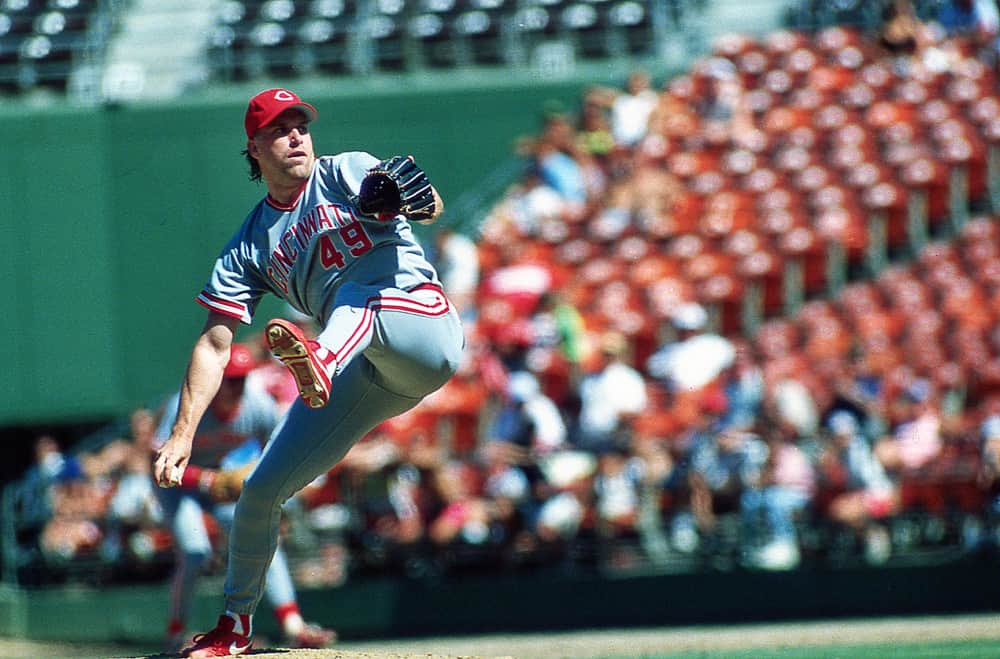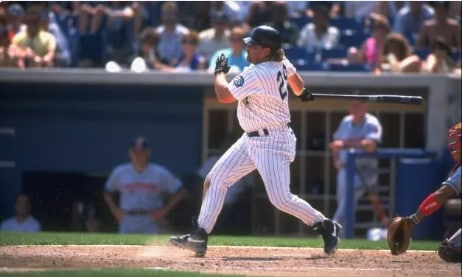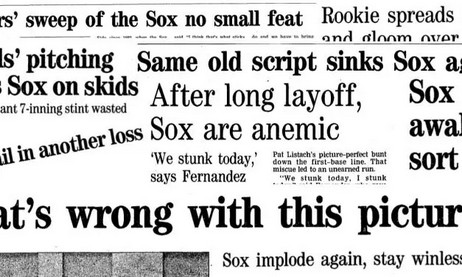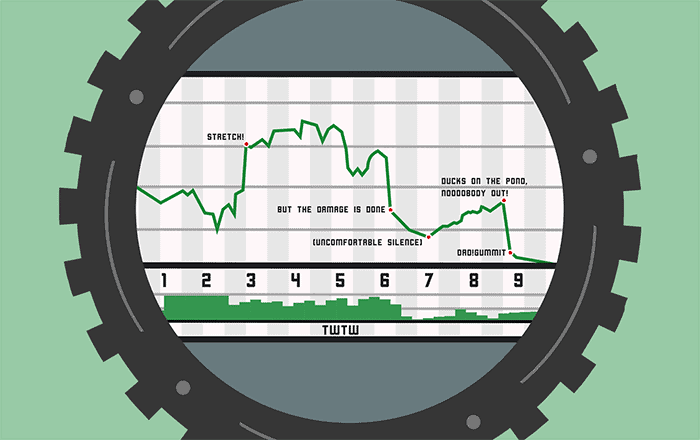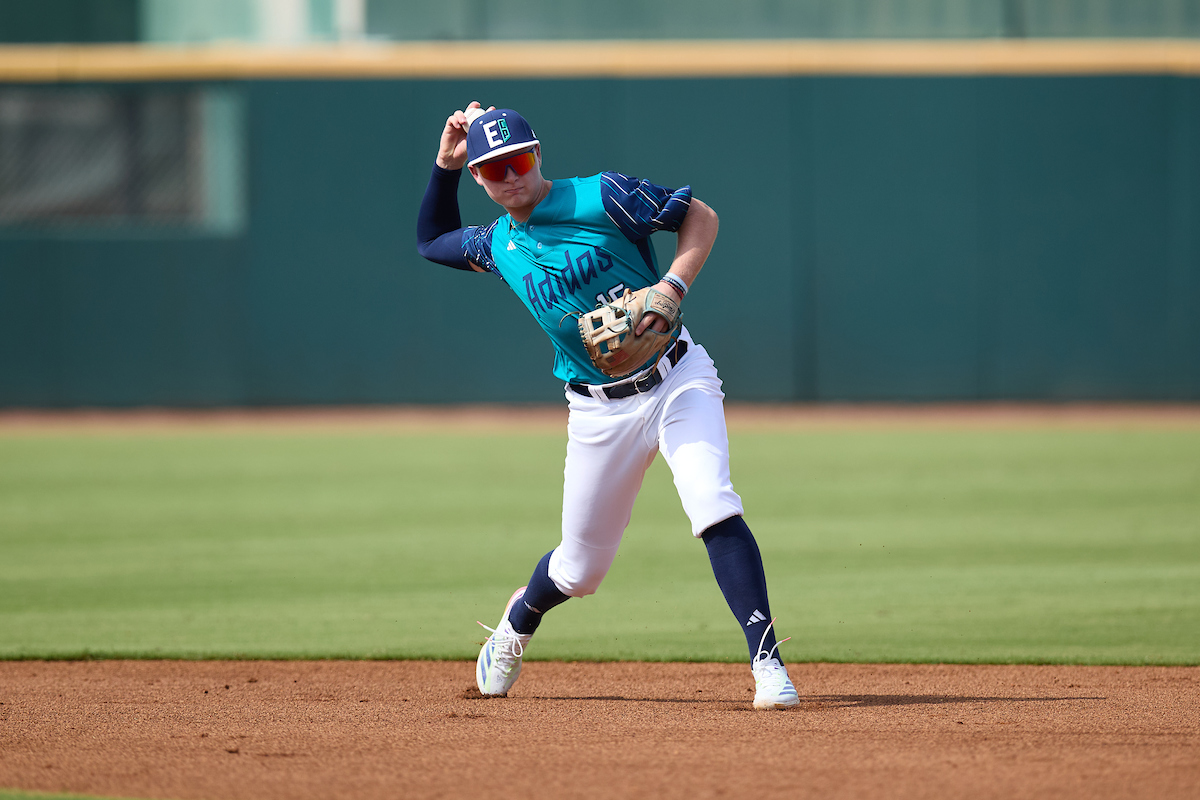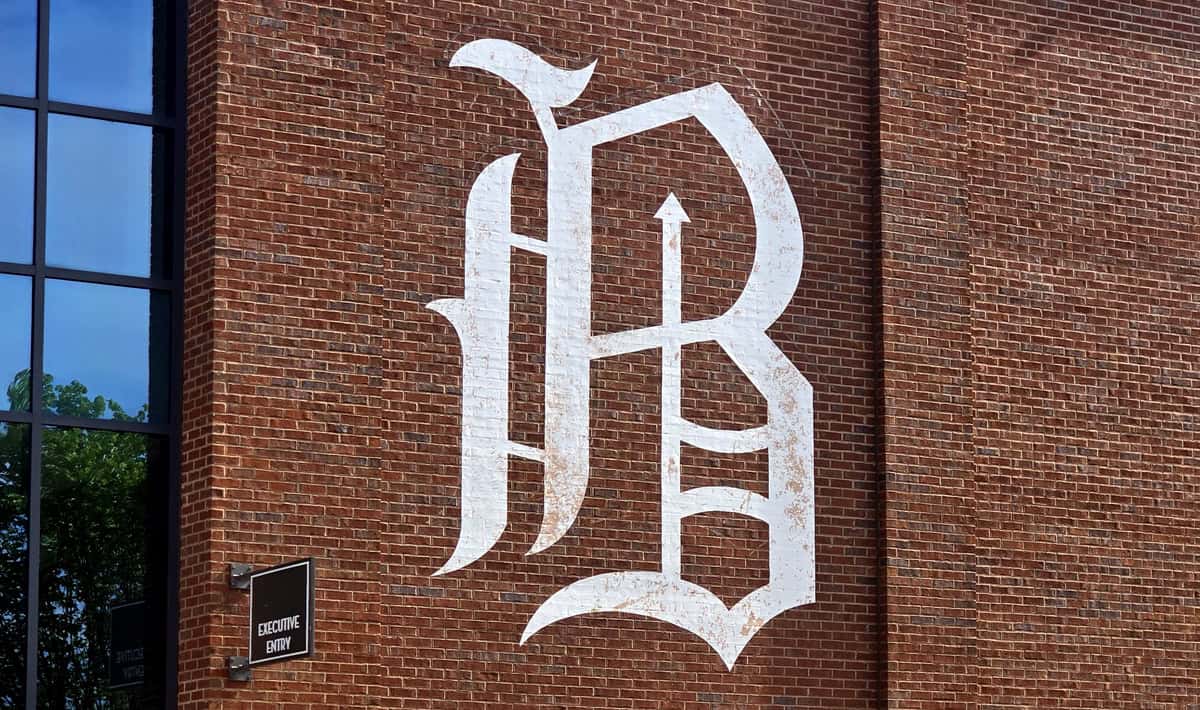Jace Fry made the wrong kind of history for the White Sox in 2019, at least in this century. According to Baseball-Reference.com's Play Index, Fry threw the lowest percentage of strikes for any White Sox who had the benefit of throwing 1,000 pitches in a season, dating back to 2000. Just 56 percent of his 1,054 pitches found the zone, which "beat" Daniel Webb's old mark of 57 percent, which he set back in 2014.
Of course, it takes a certain amount of talent to throw 1,000 pitches in a season. If you step it down to lesser round numbers, you can find new leaders who couldn't quite hack it for greater sample sizes.
Most of them have the middle name "Meiklejohn."
- 800 pitches: Mike MacDougal, 2007 (55.47% of 858 pitches)
- 300 pitches: Mike MacDougal, 2008 (52.69% of 315 pitches)
- 150 pitches: Deunte Heath, 2013 (51.25% of 160 pitches)
- 100 pitches: Mike MacDougal, 2009 (50.49% of 103 pitches)
Initially, you might think there isn't much of a difference between strike rates of 57 percent and 50 percent, but if you just watched Fry and can compare him to memories of MacDougal, it's detectable. One is frustrating, and the other is unwatchable. MacDougal's career degraded with the White Sox to the point that every outing was worse than the one that preceded it. That 2009 season lasted just five appearances, including two where he walked the only batters he faced.
Even then, MacDougal at his worst still found a way to get more than half his pitches in the zone.
As a member of the 1995 White Sox, Rob Dibble threw just 43.35% of his pitches for strikes.
But because he was on the 1995 White Sox, Dibble lasted two whole months. Or a month for every suspension he earned.
* * * * * * * * *
Dibble's legacy from his 16 games with the White Sox can still be found on the franchise's all-time leaderboards among pitches who made just 10 appearances for the club. The official pitch data doesn't extend past 2000, but he tops other ignominious lists. Whether you use walks per nine innings ...
| Pitcher | Year | Games | BB/9 |
|---|---|---|---|
| Rob Dibble | 1995 | 16 | 16.95 |
| Dave DeBusschere | 1962 | 12 | 11.50 |
| Lou Kretlow | 1950 | 11 | 11.39 |
| Atlee Hammaker | 1995 | 13 | 11.37 |
| Brad Goldberg | 2017 | 11 | 10.50 |
... or walk percentage ...
| Pitcher | Year | Games | BB% |
|---|---|---|---|
| Rob Dibble | 1995 | 16 | 34.6 |
| Dave DeBusschere | 1962 | 12 | 28.1 |
| Lou Kretlow | 1950 | 11 | 25.7 |
| Brad Goldberg | 2017 | 11 | 22.6 |
| Jesus Pena | 1999 | 26 | 21.7 |
... Dibble leads the field by a crazy margin.
Now, the idea of the White Sox taking a flier on Dibble wasn't crazy. He rose to prominence as a member of the "Nasty Boys" Cincinnati Reds bullpen, and his strikeout numbers would stand out even in today's game:
- 1989: 2.09 ERA, 99 IP, 39 BB, 141 K
- 1990: 1.74 ERA, 98 IP, 34 BB, 136 K
- 1991: 3.17 ERA, 82.1 IP, 25 BB, 124 K
- 1992: 3.07 ERA, 70.1 IP, 31 BB, 110 K
But he suffered a punctured ear drum and a broken forearm during a lost 1993 season, and he ended up setting a career high in walks (42) despite a career low in innings (41.2). The next year, he underwent surgery for a torn rotator cuff. Such shoulder injuries are often death sentences for pitchers, but with the Sox short on pitching of all kinds, it might've been interesting to see if Dibble could've hit the reset button. (His fastball was clocked in the "low 90 mph range," which registered as impressive velocity 25 years ago.)
But Dibble didn't get the "nasty" tag only due to his stuff. A Sports Illustrated story in 1991 called him a "6'4", 230-pound bundle of surging emotions and conflicting impulses," and his career was littered with incidents that lesser pitchers wouldn't have survived.
1987: "In Nashville, when Dibble felt he was being improperly used by his Triple A manager, Jack Lind, he winged three warmup pitches 400 feet from the bullpen into the dugout where Lind was standing."
1989: Dibble started a brawl with a Mets after drilling Tim Teufel high on the back. Teufel had the nerve to post a four-hit game.
1991: Dibble was ejected for throwing the ball at Doug Dascenzo while he was running to first base. Dascenzo had the nerve to drop a successful squeeze bunt.
1992: Rob Dibble brawled with his own manager, Lou Piniella, in the clubhouse as a 90-win Reds team played out the string.
That SportsCenter feature includes a couple other Dibble-related incidents, including the time he threw a ball into the center field bleachers and injured a woman.
Little about this behavior was excusable, but during an era where Nolan Ryan was revered for targeting blameless hitters, Dibble was talented enough to be allowed in on the extreme side of the acceptable spectrum.
* * * * * * * * *
Dibble added to his record during his time with the White Sox, most notably when he whistled a fastball past Pat Listache's mustache on June 29, 1995. The White Sox and Brewers had a growing beef that year, which Milwaukee pitcher Bill Wegman exacerbated by plunking Ron Karkovice after a three-run homer by Ray Durham.
Wegman was ejected, but that wasn't enough for Dibble, who nearly beaned Listach with his first pitch of the eighth inning. Listach charged the mound, Dibble was ejected, and he added yet another brawl to his record.
Unlike previous seasons, Dibble wasn't an overpowering reliever whose contributions outweighed the occasional danger he posed to his own clubhouse. Dibble was an ongoing mess, with 19 walks and three HBPs over his 12 innings up to that point. When he put guys on base, they ran on him frequently (seven steals in eight attempts).
But the number that jumps out to me is 12 outings. Dibble joined the White Sox in mid-May, meaning he was an active mess for several weeks. And it wasn't mop-up work, either. Dibble didn't pitch all that frequently, but when he did, it was in relatively high leverage.
Dibble made his debut on May 17 against Oakland, starting the eighth inning with a three-run lead. He walked three of the five batters he faced, threw just 11 of 28 pitches for strikes, and Roberto Hernandez had to strand the tying runs on base to start a four-out save.
Dibble next took the mound May 20 with two outs in the ninth inning of a tie game against the California Angels, and the go-ahead run on first. Tony Phillips stole second on Dibble, but Dibble struck out Tim Salmon to strand him. Dibble then came back out for the 10th, opening with a pair of strikeouts, but he failed to retire any of the last five batters he faced -- walk, intentional walk, single, single, walk -- to take the loss.
Dibble issued three walks for a third straight outing four days later against Texas, and while his control gradually improved, it wasn't to any meaningful degree. He couldn't throw even half of his pitches for strikes until his seventh appearance.
Even at that point, Terry Bevington voiced faith in Dibble.
By walking another batter Friday night, Rob Dibble kept alive a streak of walking at least one man in each of the seven appearances he has made in a White Sox uniform. Overall, Dibble has given up 16 walks in 6 1/3 innings, along with two hit batsmen and four wild pitches, and has an 8.53 ERA. Yet manager Terry Bevington insists he isn't concerned.
"Dibble is showing improvement," he said. "I think a good goal for Rob Dibble is that by the time the year is over, he'd be back where he was when he was at the top of his game."
The only way to understand the pull Dibble had was the uninspiring collection of less proven arms around him. The Sox called up Dibble from Birmingham a couple of weeks into the season after demoting three pitchers from the 25-man roster -- Atlee Hammaker, Scott Ruffcorn and Isidro Marquez. Hammaker was at the end of his line, while Ruffcorn and Marquez just couldn't stick.
Before that, Schueler had tried to trade Dibble at the end of spring training, but found no takers. Dibble's performance had been decent, but he wasted little time crossing the line. His first suspension came in late March for saying replacement players were "going to be labeled like child molesters are the rest of their lives."
In Dibble's defense, he wasn't the first member of the White Sox to succumb to tasteless hyperbole. The day before the White Sox suspended Dibble, Jerry Reinsdorf likened MLB chief Don Fehr to Jim Jones. But the Sporting News said Dibble specifically broke a promise to Schueler.
Signed after shoulder surgery, Dibble had a verbal agreement with General Manager Ron Schueler not to criticize the team, which Dibble had done frequently in his Reds' days. He apologized and was reinstated at Double-A Birmingham, where he is near his surgeon Dr. James Andrews, who lives there. "I've always been known for having a big mouth," Dibble says. "Guess I have to put a lid on it."
Basically, his White Sox existence subsisted on teamwide failure. Dibble might've been terrible, but he ended up outperforming the guys he replaced in spite of his inability to find the plate, and even the more successful White Sox relievers couldn't distinguish themselves that much.
Here's what the White Sox bullpen looked like through Dibble's time on the Sox.
* * * * * * * * *
His time came to an end in mid-July. Dibble made three appearances for the Sox, over which he walked eight of the 14 batters he faced. In his final outing against Milwaukee on July 15, he walked four batters over an inning's work, including three with two outs. Just 10 of his 31 pitches found the strike zone.
Bevington this time resigned himself to the fact that improvement wasn't coming.
"We don't feel anybody's going to hit him, but he's got two walks an inning and in the majors leagues you can't bring him into a game knowing that."
It closed yet another weird and unsavory chapter for a 1995 White Sox team that was just as unpleasant, but the story has two more uplifting postscripts.
For one, the White Sox replaced Dibble with Matt Karchner, a 28-year-old rookie who embarked on a hot-and-cold South Side career that ultimately was good enough to land Jon Garland in one of Schueler's greatest trades.
Also, the White Sox weren't the only team desperate enough to give Dibble a long look. Just under a month after pitching his last game for Chicago, Dibble surfaced with ...
... the Milwaukee Brewers.
Yes, Dibble returned to the majors for the team he brawled with. Weirder still, the team put him in the locker next to Listach. Weirder still, Dibble hadn't yet served the suspension the league slapped on him due to an appeal. When he lost it, it meant he had to miss time for throwing at his own team.
Dibble managed to ride out the rest of the season on the Brewers roster despite pitching even worse. He allowed runs in seven of his eight August outings, and ended up owning an 8.25 ERA over his 15 appearances. His control did improve somewhat with Milwaukee, but not enough to matter. He threw just 48.6 percent of his pitches for strikes.
Add up his time in both Chicago and Milwaukee, and his grip on league leaderboards is even more absurd. Dibble owns the highest walk rates for any reliever to pitch more than 30 games, and I'm guessing nobody will challenge him again:
| Pitcher | Year | Games | BB/9 |
|---|---|---|---|
| Rob Dibble | 1995 | 31 | 15.72 |
| Jordan Norberto | 2010 | 33 | 9.90 |
| Mark Clear | 1984 | 47 | 9.40 |
| Franklyn German | 2003 | 45 | 9.07 |
| Rob Dibble | 1993 | 45 | 9.07 |
| Pitcher | Year | Games | BB% |
|---|---|---|---|
| Rob Dibble | 1995 | 31 | 32.2 |
| Jordan Norberto | 2010 | 33 | 23.4 |
| Mark Clear | 1984 | 47 | 22.0 |
| Jeff Wallace | 1999 | 41 | 21.6 |
| Rob Dibble | 1993 | 45 | 21.4 |
(Photo of Rob Dibble in 1988 by Owen Shaw / Icon Sportswire)
